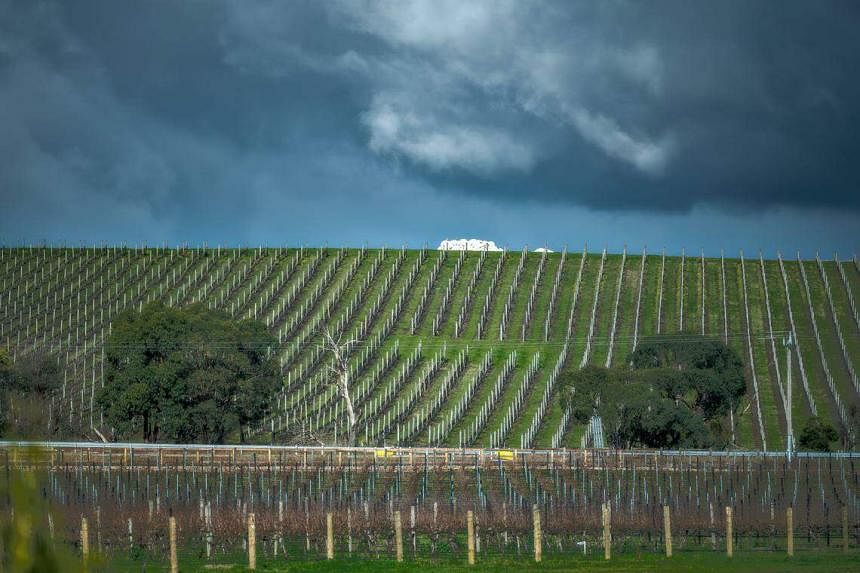Newroz as celebrated by Kurds
Newroz is about shining a light over darkness.
It’s a victory of a blacksmith over a tyrant.
Mythology
The arrival of spring has been celebrated in Asia Minor since neolithic times. The root of this story goes back to ancient Iranian legends, retold in General History by scientist Dinawari,[11] The Meadows of Gold by Muslim historian Masudi,[12] the Shahnameh, a poetic opus written by the Persian poet Ferdowsi around 1000 AD, and the Sharafnameh by the medieval Kurdish historian Sherefxan Bidlisi.
Zahak, who is named Zuhak by the Kurds,[3][13] was an evil Assyrian king who conquered Iran and had serpents growing from his shoulders.[14] Zahak's rule lasted for one thousand years; his evil reign caused spring to no longer come to Kurdistan.[3] During this time, two young men were sacrificed daily and their brains were offered to Zahak's serpents in order to alleviate his pain.[14] However, the man who was in charge of sacrificing the two young men every day would instead kill only one man a day and mix his brains with those of a sheep in order to save the other man. As discontent grew against Zahak's rule, the nobleman Fereydun planned a revolt.[15] The revolt was led by Kaveh (also known as Kawa) (in the Ossetian language, Kurdalægon), a blacksmith who had lost six sons to Zahak.[14] The young men who had been saved from the fate of being sacrificed (who according to the legend were ancestors of the Kurds[11][12][16]) were trained by Kaveh into an army that marched to Zahak's castle where Kaveh killed the king with a hammer. Kaveh is said to have then set fire to the hillsides to celebrate the victory and summon his supporters; spring returned to Kurdistan the next day.[3]
March 20 is traditionally marked as the day that Kaveh defeated Zahak. This legend is now used by the Kurds to remind themselves that they are a different, strong people, and the lighting of the fires has since become a symbol of freedom.[3] It is a tradition to jump across a fire at Newroz.
According to Evliya Çelebi, the district (sancak) of Merkawe in Shahrazur in the southeastern part of Iraqi Kurdistan is named after Kaveh.[17] The 12th century geographer Yaqoot Hamawi mentions Zor (Zur[17]), son of Zahhak (Aji Dahak), as founder of the famous city of Sharazor.[18]
In the 1930s, the Kurdish poet Taufik Abdullah, wanting to instill a new Kurdish cultural revival, used a previously known, modified version of the story of Kawa.[3] He connected the myths where people felt oppressed with Newroz, thus reviving a dying holiday and making it a symbol of the Kurdish national struggle.[3][19]
Celebration of NuRoj, a Time for Hope, a Time for Change
Published: March 19, 2023
AuthorArdishir Rashidi-Kalhur
Ardishir Rashidi-Kalhur | Exclusive to Ekurd.net
Year to year and from season to season, Spring marches into Summer, Summer leaps to Fall and Fall quietly turns to Winter and then the renewal of Spring is on us once again. Like birth and death, and rebirth, change is inevitable, and continually ticking, it is at the core of mother nature’s heartbeat.
Nature has its own course of cosmic change, its own ebbs and flows, and so too, we humans, through our divine gifts of human will and reason decide the courses of our lives, directing actions that fall within the realm of our consciousness and the powers of our ability to make choices.
The perpetual and rhythmic revolutions of Moon around Earth and both of those heavenly bodies around our Sun, along with the constant flux of all pulsating matter within the universe is at its heart, the reason we celebrate the infinite coming of Spring, Summer Fall Winter then back to Spring again. In the Kurdish language, we have called this eternal renewal, NuRoj, literally, a New Day. This celebration of a New Day is soon approaching and is just around the orbital ‘corner’ of Earth, revolving around the Sun, and arriving this year on a Monday, March 20, 2023, specifically at the hour 21:25 UTC (Coordinated Universal Time).
Let us celebrate this year’s NuRoj as described by KAES in the following two articles here:
1. Spiritual Revival of the Forgotten Traditions of NuRoj
2. A Brief History of NuRoj, Kurdish New Year — Newroz
While this past year has brought sad and devastating news of an earthquake along with general aggressions towards Kurdistan, its land and ways of life, they have in no way been able to shake the core confidence and determination of the Kurdish people from marching forward to bring permanent and monumental good news of change to the future life of our people over all of Kurdistan.
The life of Jina Amini, the Kurdish embodiment of the rallying cry of Woman, Life, Freedom, who was herself a veritable paragon of both virtue and freedom, through her tragic death, raised the defiant shout of millions around the world, breaking the very foundations of the longstanding dictatorial regime in Iran.
Social change is often the result of systematized forward thinking and social progress is most often forward moving, however, in the case of certain countries, and in the case of Iran in particular, to theocratic and dictatorial groups, change can also mean a regression and backwards thinking, a nostalgic return enacted to return to and restore a defunct system of corruption, the outgrowth of which is a pompous culture of pretentiousness inherent to the old regime.
So with the coming of NuRoj 2023, let us all be firm in our beliefs, resolved in our determination, and committed to freedom with hope and optimism to embrace a New Day, a new life, and a new thinking which separates us from the old regimes and its pretentious culture of pompousness, arrogance, conceit and corruption, that has absolutely no place in the heart of Kurdish culture.
I wish everyone a most happy NuRoj to all reading this, and may the Kurdish New Year 2751 bring you and your family, both vibrant health and immense prosperity, and many auspicious changes quickly coming to you and to the people of Kurdistan in the new year ahead.
Ardishir Rashidi-Kalhur, the President of Kurdish American Education Society, Los Angeles, U.S.
The opinions are those of the writer and do not necessarily represent the views of Ekurd.net or its editors.
Copyright © 2022 Ekurd.net. All rights reserved









:quality(70)/cloudfront-eu-central-1.images.arcpublishing.com/thenational/F445NSIMCPJTKGYCLN5DMYWD4E.jpg)
:quality(70)/cloudfront-eu-central-1.images.arcpublishing.com/thenational/E3LLBXWHZIWKHPSBP7CVABEDUA.jpg)
:quality(70)/cloudfront-eu-central-1.images.arcpublishing.com/thenational/7DFVXKVRYWCMI7IWQ5HE7PZZBE.jpg)
:quality(70)/cloudfront-eu-central-1.images.arcpublishing.com/thenational/U2ZUNUPALNM24IJVVMT3HQ2XFQ.jpg)




